Resistors
A Motor with a Constant Force (Force Source)
Let us start with a pump in a loop of water where the pump is powered by a small motor powered by a battery. If the Lego motor is allowed to spin freely, it will spin at a very high rate; however, when the motor is hooked up to the pump as is shown in Figure 0, the water will begin to flow but at a slower rate due to the natural resistance of the water. We are going to place a number of obstacles to the flow in the form of sand filters and the sand filters will resist the motor which is attempting to pushing the water through the pipe.
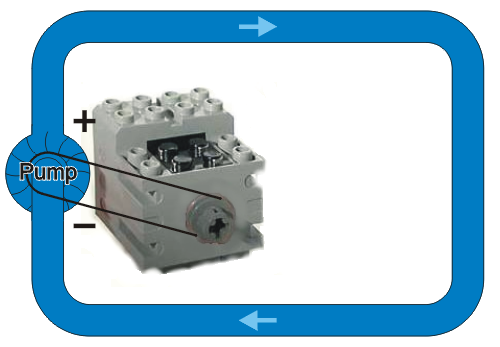
Figure 0. A pump in a closed loop.
Consider a pump in a closed loop of water which contains a sand filter as shown in Figure 1.
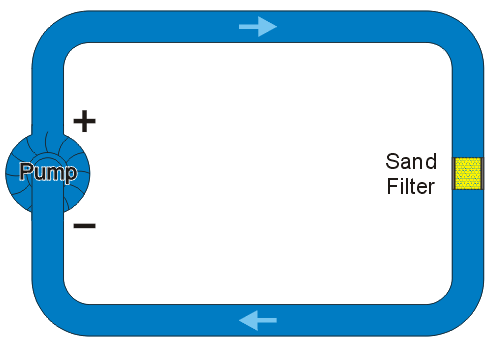
Figure 1. A loop of water with a sand filter.
The sand filter is providing a resistance to the circling water. The amount of resistance depends on the properties of the sand. If the sand is replaced with a courser sand, as is shown in Figure 2, there will a corresponding lower resistance as there are larger gaps between the sand particles and consequently, the water will be able to more easily pass through the filter. It will, therefore, be easier for the pump to circulate the water and the current (speed of circulation) will be faster.
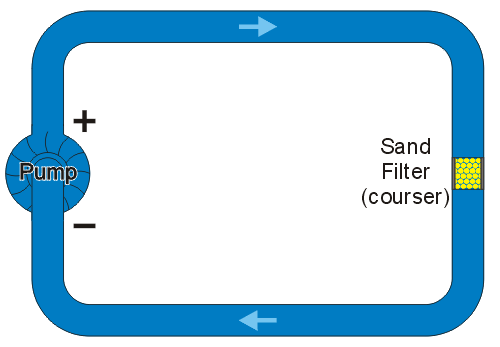
Figure 2. A courser sand filter.
Alternatively, suppose the sand is replaced by a finer clay as shown in Figure 3. The clay is very tightly packed and will provide a much larger resistance and consequently, there will be a significant reduction in the current.
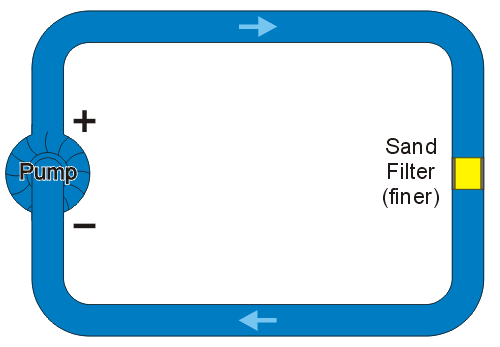
Figure 3. A loop of water with a fine clay filter.
Sand Filters in Series
Suppose that a single pipe has two filters in series as is shown in Figure 4. The first filter provides a resistance as does the second filter. The resistance of the two filters should not depend on their separation, and consequently, the resistance of the two filters should be the same as a single filter twice the length.

Figure 4. Two sand filters in parallel equivalent to a single sand filter.
Similarly, one could assume that there exists a filter with finer sand which could provide an equal resistance to the two filters, as is shown in Figure 5.
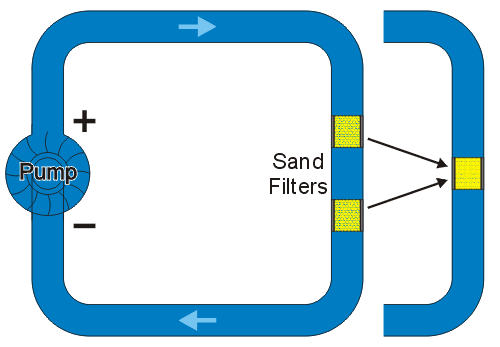
Figure 5. Two sand filters in parallel equivalent to a single filter with finer sand.
Sand Filters in Parallel
Suppose that the pipe splits into two, each having the same sand filter as is shown in Figure 6. This doubles the surface area through which the water is being forced which should consequently reduce the the resistance. Because the area is doubled, one could suggest that these parallel sand filters could be replaced with a single filter with half the resistance.
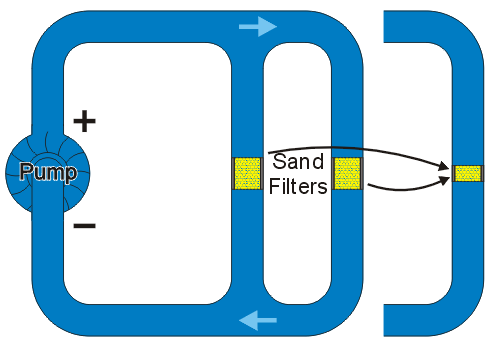
Figure 6. Two equal sand filters in parallel equivalent to a single sand filter of half the resistance.
Alternatively, suppose the two parallel sand filters have significantly different resistances, e.g., a course filter and a very fine clay filter as is shown in Figure 7. In this case, one could expect that, relatively speaking, the clay filter is essentially a blockage. There is a small amount of seepage through the clay filter, but most of the water is passing through the course filter. Consequently, it is reasonable that we could replace the two parallel sand filters by just the course filter.
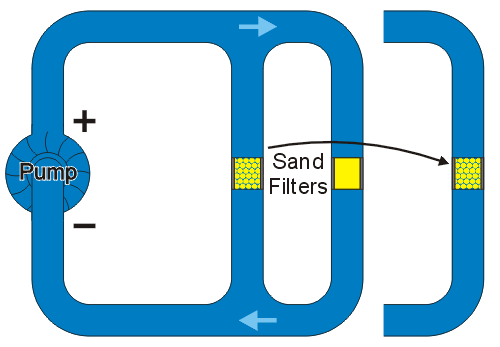
Figure 7. Two very unequal sand filters replaced by the single filter with lower resistance.
A Motor with a Constant Current (Current Sources)
In Figures 0-7, the pump is hooked up to a small motor. Suppose, however, that you have a very large engine (the engine of a Spitfire, for example) which has a controlled speed. This motor produces a constant current flowing through the pipe regardless of the obstacles. If there is are no filters in the pipe, the water travels a a given speed and when a filter is placed into the pipe, the current remains unchanged, but a stronger force is pushing the water through the filter.
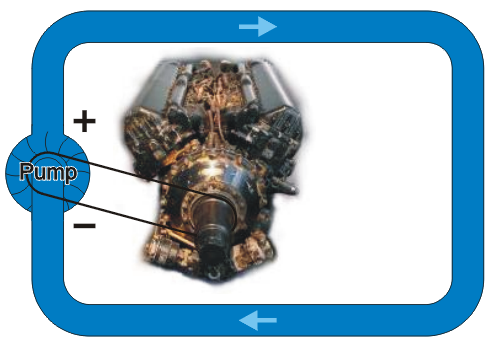
Figure 8. A controlled motor capable of maintaining a constant current.
Consider a split in the pipes where both pipes are equal in size. In this case, one would expect an equal amount of flow in each pipe; however, if there is a sand filter in one of the two pipes as is shown in Figure 9, then the pressure from above and below that filter will be equal. Consequently, all the water will flow through the pipe without a sand filter.

Figure 9. A controlled motor capable of maintaining a constant current.
If we equalize the sand filters in both pipes, as is shown in Figure 10, then one would expect that the current in each pipe would again be equal.
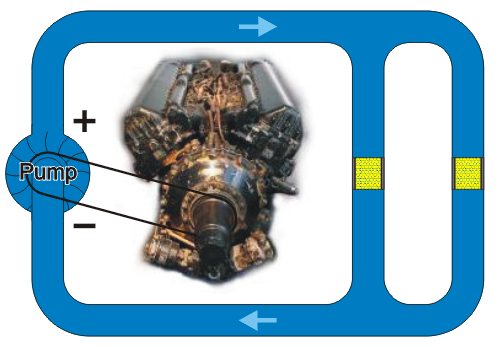
Figure 10. A controlled motor capable of maintaining a constant current.
However, suppose that the resistance to the flow of one filter is three times that of the other sand filter which has courser sand, as is shown in Figure 11. In this case, it would be reasonable to believe that 75% of the current would pass through the courser sand filter and 25% would pass through the filter with the finer sand filter and which has a greater resistance.

Figure 11. A controlled motor capable of maintaining a constant current.
